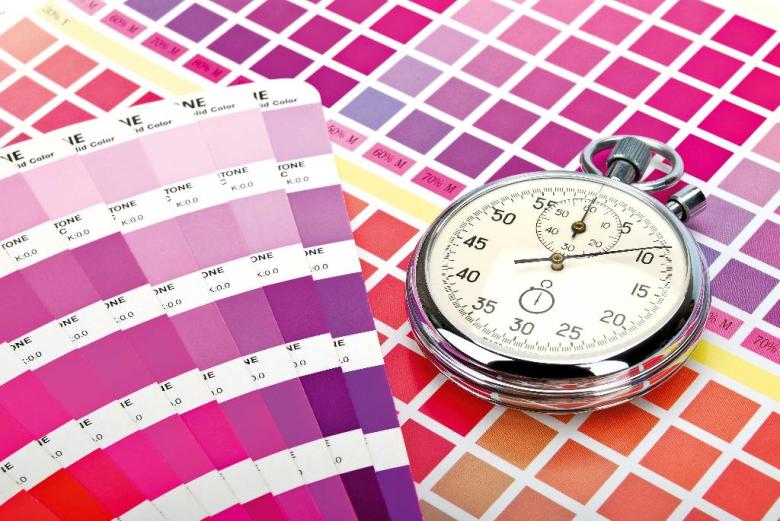
In today’s cash-strapped Australian economy, downward pressure on pricing is affecting traditional commercial printers using litho presses, where there is no digital back-up for short runs and variable-data printing (VDP).
In a business regimen where price and quantity are the drivers, many offset-only printers are under the gun, trying to win work onto their presses, selling at or below margin, and offering their customers the conventional proposition of a warehouse full of whatever it is that has been ordered – brochures, leaflets, flyers, reports, stationery.
The trouble is that much of that output will be outdated by the time it is ready for use – information that has changed in the blink of an eye, making redundant thousands of copies of whatever the job was. The fact is that a sizeable component of the job will be pulped before another barnload is ordered, so the cycle can repeat itself.
Small wonder then, that in the past decade many commercial printing businesses in Australia have taken advantage of technology that allows micro-runs, down to double digits, even single digits, in production printing. It almost goes without saying that customers in today’s hit-and-run economy (and society) are in a hurry. Printers who have spoken to ProPrint talk about an “urgency culture” or an “urgency addiction” in which customers are demanding, say, a 24-hour turnaround – but a glimpse at the uncollected job in despatch makes it plain they only needed the work back in several days. Of course, customers being over-urgent about deadlines is just as bad as being overly relaxed – both point to poor planning.
Yet it’s an exceptionally brave printer who will become so enmeshed in its customers’ project planning that it’ll be able to tell them exactly when they need the work. Unlike facility management outfits, most smaller commercial print businesses are happy enough to give their customers what they think they want, on the basis of that cheerful principle that “the customer is always right”.
It makes more sense to print “on demand” for certain exigencies, not just for the customer, but for the printer, which can charge a premium for mini-jobs and overnight returns. No wonder then, that globally, the digital market is estimated to double by 2012, and that over the past decade, it has grown a massive 350%.
Konica Minolta national product manager Brett Palmer says factors such as labour, set-up, wash down, wastage equipment and leasing costs make it difficult to define a run length at which digital stops being more profitable than offset. “This aside, however, we commonly see the shift from offset to digital occur in the range from 1,500 to 2,000 SRA3 sheets.”
Kodak’s digital print solutions manager for A/NZ, Steve Ford, says that with the continuing trend toward shorter run lengths of offset jobs and high-quality output from presses such as the Kodak NexPress, the decision to transfer a job to digital is normally based on the printer’s production capacity at the time, and the delivery deadline.
“However, the real added value of digital print is the ability to incorporate personalisation and versioning for targeted messaging, or the use of additional features that an offset press can’t deliver, such as dimensional clear ink that can print onto the surface of an image to give it a textured feel.”
Forward-thinking commercial print houses are reaping the benefits of having more than their “offset” shot in their locker – in fact, for the past few years, they have been bringing in other processes, such as artwork and bindery, to deliver quality work dead on time.
Hybrid workflows
Some print operations are combining their workflows to minimize double handling of offset and digital files. Industry heavyweights, such as Kodak with its Prinergy workflow, are taking notice, offering products that enable colour matching across output devices (CtP, proof, plate, digital), late changes, and printing a file whose integrity has been maintained throughout the process.
Print City is an offset/digital business in Melbourne’s CBD. Founded by Australian digital printing pioneer and on-demand “evangelist”, Alan Thomas, the company now has four full-time staff. Manager Mason Thomas, Alan’s son, says it’s timing, not the number of impressions, that decides whether a job is sent to a Heidelberg GTO two-colour press or to one of two Xerox presses, a 2060 and an 8000.
Mason Thomas says many clients will ask for an express service, which is the digital option, and will pay an extra 30-40% if they want it that day instead of in three days.
“But if they’ve got no timeframes and they leave it up to us then on, say, double-sided A4, a standard job, I’d say around 500-600 would be the switchover point from digital to offset,” estimates Thomas. “With single-sided, it’s more around 1,000.”
Comment below to have your say on this story.
If you have a news story or tip-off, get in touch at editorial@sprinter.com.au.
Sign up to the Sprinter newsletter
